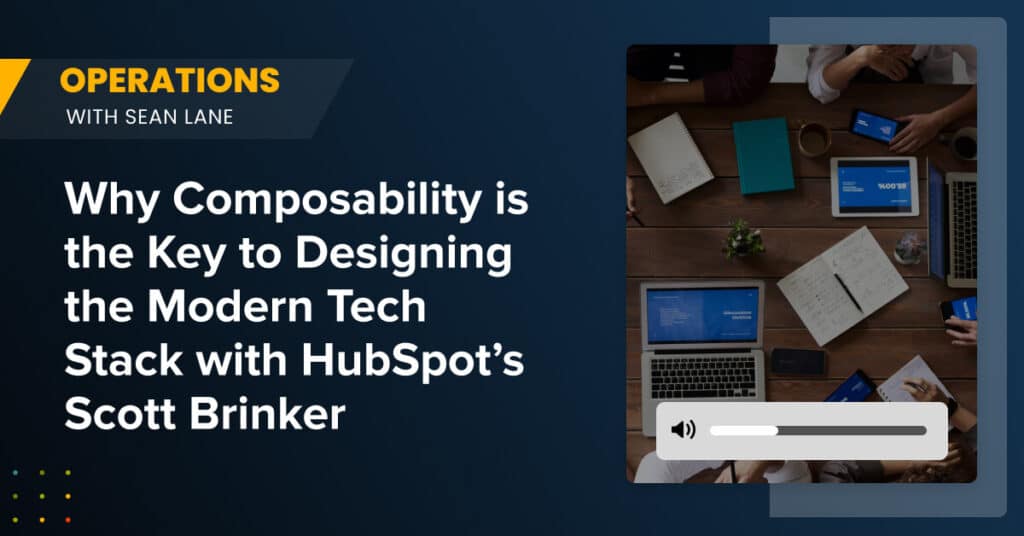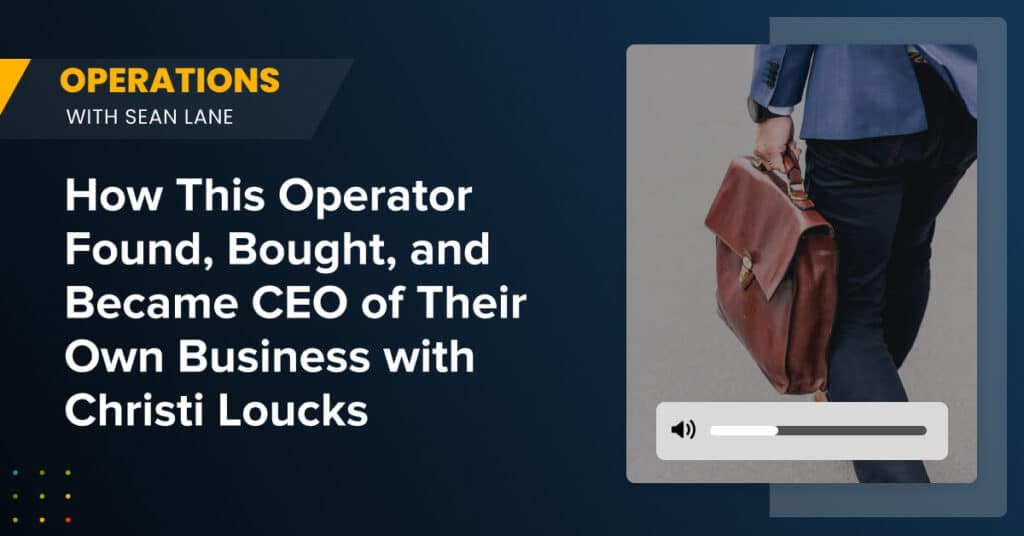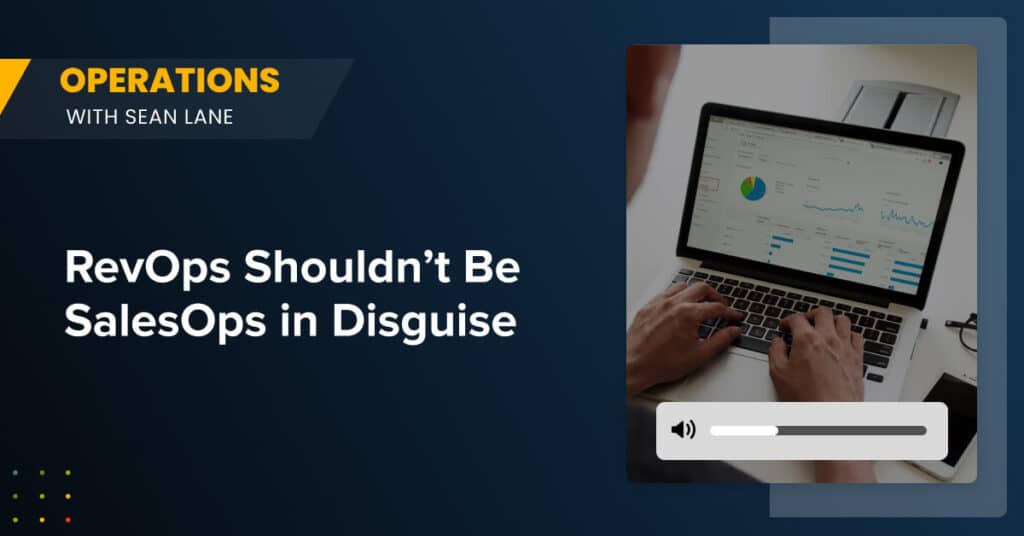A GTM Roadmap for Multiple Products
Overview:
- Introductions [00:05]
- How can multiple products affect GTM? And what do we mean by multiple products? [01:45]
- When is the point where it makes sense to think of GTM for different products separately? [07:31]
- What questions should you ask when you’re planning for multiple products? [13:39]
- How do overlays factor into this discussion? [20:11]
- How do you estimate TAM for a product with no history? [28:11]
- Takeaways [30:49]
Introductions [00:33]
Tyler
Hello, everybody. Welcome to another episode of our Fireside Chat. You’ll see, I’ve got a background today. I’ve never had a background before. I finally got a background. I’m your host to Tyler Simon, head of Customer Success at Fullcast, and we are a go to market planning and execution platform. Today’s guest is Jaclyn Balben, VP of Operations at Bamboo Health. Jaclyn, why don’t you give us a brief intro?
Jaclyn
I head up operations for Bamboo Health. We are a software solution in the healthcare space, really focusing on revolutionizing care collaboration for the improvement of full person care. The operations space at Bamboo Health encompasses a couple of different functions one of those is revenue operations and the other is the delivery function. My career background comes up through revenue operations, so it’s an area that I’ve spent a lot of time in over my career and within Bamboo Health. The delivery function includes implementing our solutions for customers to ensure that they’re getting the best possible outcomes when using our products and services, as well as our customer support organization. So, a couple of different functions within operations. But one thing that’s really exciting is using the same frameworks and models within all of the different departments to drive scalable and effective outcomes within the organization, whether that’s for external customers or internal customers within the business.
How can multiple products affect GTM? And what do we mean by multiple products? [01:45]
To start us off, let’s frame the topic: How can multiple products affect our GTM? How should we think about that?
Jaclyn
One of the things that’s first important to be clear on is that multiple products does not mean different features and functions of the same core product. When I think about multiple products, I mean either the ideal customer profile or the buyer of the product is changing. When you have fundamental shifts in who you might be speaking to or what sort of customer you’re targeting, everything in your go to market motion is likely changing.
Tyler
So a quick example of multiple products, we can use the Salesforce product line, since most people are familiar with it. So there is the Sales Cloud product and there’s also Inbox or Salesforce Maps – these are other products but still have the same ICP. Whereas products like Marketing Cloud or Pardot are entirely different ICP.
Jaclyn
Exactly, so in that example for Marketing Cloud vs Inbox: your materials are different, your pitch is different, your price points are different, your ideal customer profiles – all of those things are going to change. And that is where the complexity really starts to come in, because it means all of those functions that you’re likely running within a planning organization or a planning process are going to be duplicated multiple times over – and not in a copy-paste type way.
So we have different teams working with different products. We want to have a lot of the same outcomes, such as booking plans, TAMs, and quotas but with totally different inputs. So it gets a lot harder for teams to be able to split out all of the different factors that go into each individual go to market motion for those different product.
One important consideration is what should our ratio be of revenue operations to our sales team? That ratio doesn’t hold true when we have multiple go to market motions. If we had 40 people selling the exact same thing, we need a lot fewer people in revenue operations. But if we’re effectively running multiple different business lines, we need a lot more people because they’re doing those same jobs over and over again in completely distinct motions.
When it comes to effectively bringing a product to market, very few times does a company miss the marketing strategy or the pitch strategy or how do we actually determine why we’re doing what we’re doing.
But then on the downstream, how do we take that strategy and translate it into operational effectiveness? That starts to be a place where I think people need to get earlier in this cycle, particularly revenue operations team getting earlier in the cycle to say, we really need to be at the forefront of this planning so that we’re able to cascade it effectively throughout the organization in order to drive great outcomes.
There’s nothing that distracts the sales team more than having a new product to sell, but not having clear territories or not having a good compensation plan in order to incentivize outcomes. All of those types of things need to really be worked out early on in order to be effective.
When is the point where it makes sense to think of GTM for different products separately? [07:31]
Tyler
Do you feel like there is a point where you feel that the teams need to start thinking about things differently rather than just trying to lump it all into one single go to market?
Jaclyn
I don’t know that I have a good answer on what that trigger point is. I’d love to have one, but I don’t think I’ve got a great answer there. I do think, though, it’s why the engagement early is important because there’s going to be an inclination, if you’re late to the party, to just say, let’s try to make this as much like everything else as we can because we have a framework for that. And that’s the reactionary answer, the proactive answer when you’re early is what is it we’re trying to accomplish? Why is this different? Why would we take this approach? How do we think about defining success? What are those right outcomes?
What we want to do is start with the right questions in order to drive the process versus being handed a problem to solve for. Rev ops needs to be involved early and often to understand, from a product marketing perspective or general go to market strategy perspective, how do we think about these different motions that the downstream teams need to account for? If you have great leadership and you have the right people in the conversation, they can get started at the right time rather than, at the point of enablement, for example, which is too late.
Tyler
When we talk about early, we’re talking about you should be in conversations right now for next year. What we see on our end is for companies with fiscal year starts in January, planning should start in October – in particular, carving books. So if you’re not having those conversations right now, you’ve got to figure out where those are happening and get in there because that’s the decision point.
Jaclyn
Yeah, I would agree with that. Going back to resourcing, one of the challenges people often feel is that it’s hard to carve time out to go proactively have conversations. But if you’re not doing that and you’re not thinking intentionally about the future, you will never get ahead, right? You’ll always be in that reactionary mode.
So how do you set the time aside and ensure that you have the space to have the right conversations? Because we’re having conversations about territory plans and what accounts we’re going after and why, what is our future looking product strategy, all of those types of conversations. And some of it is for now and some of it is for the future. So it’s not like these have to be completely separate from each other. One is a planning conversation and one is an execution conversation. We often will combine those, so we can utilize the time that we have to discuss the types of questions we should be asking now that will help inform how we think about how we’ll get better or how we’ll plan for next year.
We’re almost always planning and we’re always thinking in that way because then it becomes a lot more manageable. I think that’s one of the challenges with planning — planning feels so daunting, and it is, if you leave it all to last minute. If you’re always planning, it’s a lot less daunting.
What questions should you ask when you’re planning for multiple products? [13:39]
Tyler
So. I want to talk about these questions that you think people should be asking in the room. What are the things that people should be thinking through as it relates to having multiple products? What are those questions we should be asking?
Jaclyn
There’s a bunch of somewhat obvious answers but then one of the things that I think people often overlook is having a somewhat immersive interview processes to understand what’s working and not working from those people who are hearing it in and it every single day.
One of the things that we’ve invested a lot of time and effort into is ensuring that we have the time set aside to interview every individual rep. At a certain point, with different scale that becomes more or less feasible. But we want to make sure we’re hearing directly what is or isn’t working because there’s often not a forum to get that feedback unless something is going disastrously wrong or incredibly well. But there’s so much insight to be all across the spectrum between disastrously or wonderfully, where we can learn so much from the individuals in the market who are actually talking to the customers. There’s this piece of – this has been going pretty well and the data looks like it’s going pretty well but we keep hitting this roadblock. Or we would really be better off if we had this item tweaked. Sometimes it’s market knowledge – in this specific area of the country there’s this unique aspect to what’s going on in that market that makes this easier or harder from our side.
So, we would think about translating that insight into value. Is this something that is going to show up other places and is a problem that we should be aware of and plan around or is this an opportunity that’s going to show up in other places that we should try to replicate?
And when I think about actually engaging and asking the right questions, you know, there’s the obvious like we should be engaged on a strategic level to understand what are the point of the product and how we think about the go to market and why. That’s the go to market strategy.
But I think the piece that often gets missed is what’s the on the ground feedback that maybe doesn’t show up in the company slide deck but is real tangible insight that should potentially show up in a territory plan or should be accounted for in comp plan. Including things like spiff to say. There’s this really specific thing that we want to replicate because we saw a lot of success with it. So we’re going to put an incentive around it to see if we can do that. And a lot of that does not come from just a top-down strategy. It comes from the sort of feedback from the market and the feedback from the people who are hearing from customers directly. And we’ve seen success with that.
Tyler
This isn’t the first time that somebody brought up the fact that listening to the reps and to the market is huge. And I think we found an answer to our original question, which is if we have one go to market multiple products, a good indicator that maybe you need to start thinking about separating out these worlds is from the feedback that you get from the reps, right?
You’re in these interviews or these discussions and you’re listening to the feedback, so you’re going to get clues that maybe these products should be looked at in different worlds, right?
Jaclyn
I think the other thing that sort of rings a bell for me is digging into data. But instead of telling people what the data means, asking people what the data means.
And for an example of that, we’ll see sometimes that different reps who theoretically are supposed to be doing the same things just in different territories or with different product pipelines. And so asking a rep to say, hey, I noticed that you have a lot more of this product in your pipeline than this other person who’s selling this other thing. Why are you selling two different products? And this is more like the sales cloud type example, right? You’re both sales cloud reps but you’re selling a ton of CPQ and you’re selling a ton of inbox like why and understanding that.
That also has been a good prompt to pull out different pieces of product knowledge because in some cases the answer leads us to some of what you’re talking about to say should we actually be specializing somewhere, should we actually be peeling things apart? Is there a different problem that is maybe an enablement issue or a support issue in that market or could be collaborating with marketing more proactively?
So there’s all sorts of different outcomes. But an example of an effective rep interview also includes some of that. Help me understand the data that I’m seeing. From your perspective, seeing what outcomes come from. There’s really targeted questions that’s been eye opening for us because often the answer is very much something that we would not have anticipated, but incredibly insightful that changes how we’re thinking about our go to market, our strategy, or sometimes even our territory, planning all sorts of different things.
How do overlays factor into this discussion? [20:11]
Tyler
I want to change the topic a little bit and talk about overlays because I’m still stuck on the single go to market multiple products thing. And I’ve seen this a couple of times where there’s specialized overlays that are here’s, our main go to market. And we’ve got these specialized overlays that really know this secondary product, whatever it is. Let’s go back to we’ve got our sales cloud go to market. We’re now going to feed in these marketing cloud overlays, but we’re going to push them into the standard go to market. Have you seen those scenarios? Have they worked? Is there like a specific, like, this is what it should look like, or if your products are somewhat tied, this works? How should we think about that?
Jaclyn
Yeah, this is a painful one because I’ve seen it a lot. I do not feel like we have a fantastic answer. There’s been a number of times where we have worked on trying to implement really effective overlays. I feel like one of the big challenges with an overlay and it depends on what angle you’re coming from. Sales and engineering overlays are pretty straightforward because everyone generally incented very much along the same lines when you’re talking about someone selling two different products. Particularly when there is enough difference to call them two different products in the context that we’re using today. But not so much difference that one rep couldn’t possibly hang in the conversation or represent to some degree what it is we’re trying to sell. It starts to get complicated. It’s much more straightforward when there is so much differentiation in the product that one person couldn’t possibly represent the other product effectively because they’re just two completely different things. And so it’s very clear, like, the buyers different, the products are very different. I don’t have expertise there. I just need you to come in and sell this thing.
I think the challenge sometimes comes when there’s enough difference that the territories are fairly straightforward and it needs to be carved out. But there are these edge cases or use cases where there are overlaps and so you put an overlay type of concept into place in order to try to facilitate that really effective collaboration between the teams, but that it’s not so black and white that everybody is entirely aligned.
We’ve certainly hit that type of challenge in the past where in some cases it’s really straightforward and we have all the swimming lanes really well worked out. clear there are others that every single time it comes up it says remind me how this works. Okay, why does it work that way? And that’s when to me it’s like we don’t have a really good why and the overlay stops making as much sense. So I don’t know if this is an area that you’ve seen. I’d love to hear some of your experiences if you’ve had it, because this I think is one of those I believe very much in effective incentive design where if everybody has alignment in their incentives, you’re going to have a very well running revenue organization because what’s good for every person in the organization is good for those around them.
And for us that’s important. We have a network of affect business. It’s really important for what’s good for Team A is also good for Team B because they feed into each other, but there’s clear roles and responsibilities so there’s not overlap. And then these instances where we have these rubs that are not easy to define and we have tried to and not been incredibly successful. It really sort of just puts sand in the gears because everyone’s pointing it in the right direction except for this one place. And that one place is where you’re going to cause churn and thrash and confusion and frustration and it can really upset so much of the other good work that you’ve done in other areas. So it’s certainly a topic that I could discuss a lot because I don’t think I have a perfect solution for it. It’s really detrimental when you don’t have clear incentives.
Tyler
Yeah, I think from our perspective, most of the stuff that I’ve seen has all been along the territory planning side of stuff, right? Like carving books and where do we put overlays? Or is it two separate go to markets, et cetera.
In talking with customers, it kind of goes back to our original piece of just hearing how things are working from the sales reps. Right? So there are some customers where they’ve got that single go to market and they’ve got an overlay that specializes in a specific product and those products are pretty closely related. It probably is almost more on the sales cloud and then inbox type of thing. But inbox would be like more complicated than just inbox. Maybe it’s CPQ. That’s a better example. Right? And so you have this specialist that still fits into a very similar ICP in terms of that go to market. But CPQ is so in depth and there’s so much in there that it’s almost a sales cycle in and of itself. So you would have an overlay or a specialist that is kind of aligned with that main Ae that runs the account, so the incentive piece becomes easy. But there’s no need to fully break out CPQ into a separate go to market because it’s such a good complement to sales cloud. So that’s kind of what we’ve seen a lot of.
And then the hard part is figuring out from that standpoint on the overlays is just how do we keep the ratios where they need to be? So it’s not like one overlay is working with 80 AEs. So that’s kind of the piece there.
We are getting close on time and it’s amazing how fast the time goes with these things. I want to quickly, let’s see if we can get this done. You got two minutes to talk about this. So, new products. When we’re introducing a new product,
How do you estimate TAM for a product with no history? [28:11]
Tyler
So maybe you’ve got some quick hits on how you start to think about estimating TAM for a product that you’ve never sold before. You’ve got no history on it, there’s nothing.
Jaclyn
Yeah, I think that for us, we do a TAM SAM SOM type framework – so we might measure a total opportunity with TAM, so total addressable market. But then we want to get down to what’s obtainable for us because we do have some network effect type considerations where we actually need to build networks around us in order to bring our product into a different territory or introduce a new product. And so I think a lot of what we would do is start with what are the broad brush strokes to get to a TAM? And I think we probably use similar frameworks as anybody there. What’s a price point that we could estimate? How would we define some amount of ICP in order to carve out the world? But then we start to try to narrow that down into what is or is not obtainable in some given time frame in order to get to a more realistic target and then start to pull out. How would we then take what is obtainable in that time frame and align it to more of a headcount bottoms up type model to meet in the middle from top down? What do we think is actually attainable to bottoms up?
What is the headcount plan and the territory plan that we would need in order to service what is obtainable? And then that often brings out a lot of the really specific questions that make up the heart of an effective planning process. We start to be able to say, here’s a bunch of inputs. Now how do we pressure test and sort of debate all the merits of that approach to get to a place where we actually have a specific plan of action and a specific plan to roll out to the business to go execute against?
Takeaways [30:49]
Tyler
I feel like this is like we need to have another one of these because I have a lot of questions, but we are up, out on time. I told you I’d give you a minute to give us your silver bullet. Our summary of what’s the key takeaway from today.
Jaclyn
I think the key takeaway is that the value in being proactive outweighs the pain of adding another thing to your to-do list, and that for people that are trying to really run a best in class organization and be leaders in their teams, carving out the time to think proactively and to drive the execution and the planning process is what will set apart you from the rest. And that it’s hard to do. If it was easy, everyone would do it. But that the rigor and the intention that it takes to be at the forefront and be proactive and really leave the charge when it comes to things like planning is something that I think sets you apart and is the type of muscle and habit that once you get into, it’s easier here to replicate and just paste evidence in the long run.
Tyler
Yeah, for me, I just listening, right? Like listening to the reps keying in on those clues that maybe it’s time to separate things out if you’ve got one go to market. I think that was kind of the big win for me when I just clicked in my head, I was like, oh, yeah, this is how we do this. Jaclyn, thank you so much for joining us today. I think we have to have you back on because we teased tan Samsung and I think I was like, oh my gosh, this is another 30 minutes conversation, so maybe we’ll have you back on soon enough. So, yeah, thank you for joining us today. Happy Friday and happy weekend to everybody. And until next time, it was great.
Jaclyn
Thanks for taking the time, Tyler.








